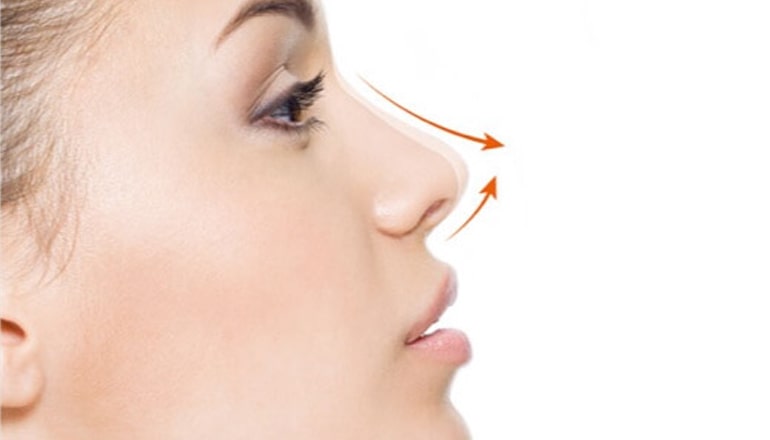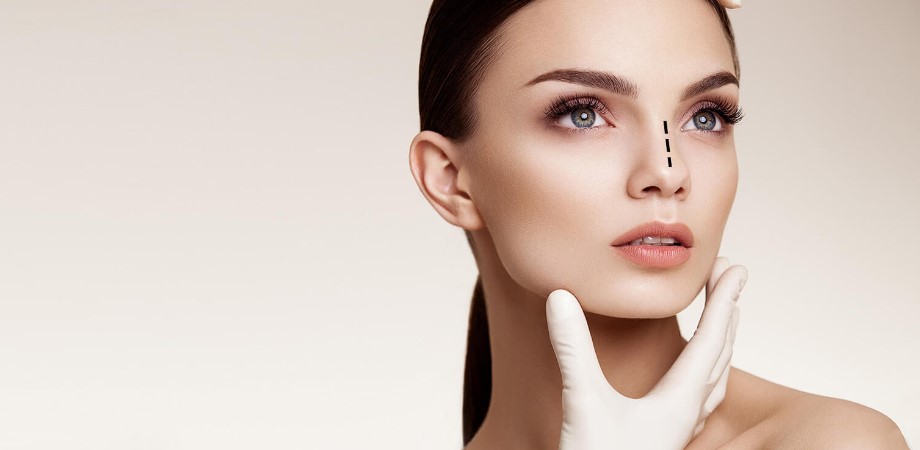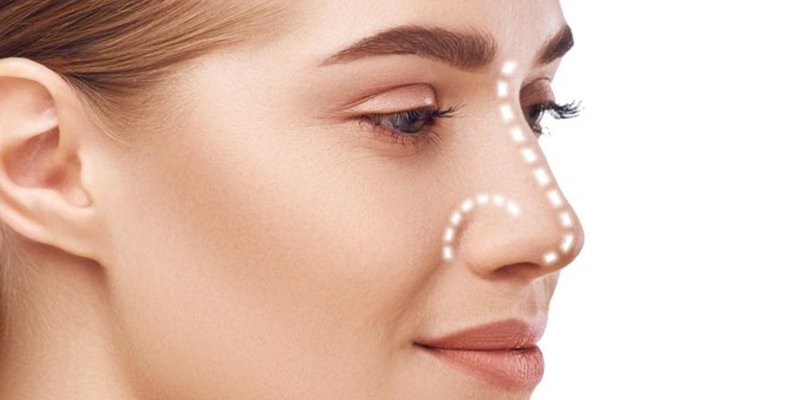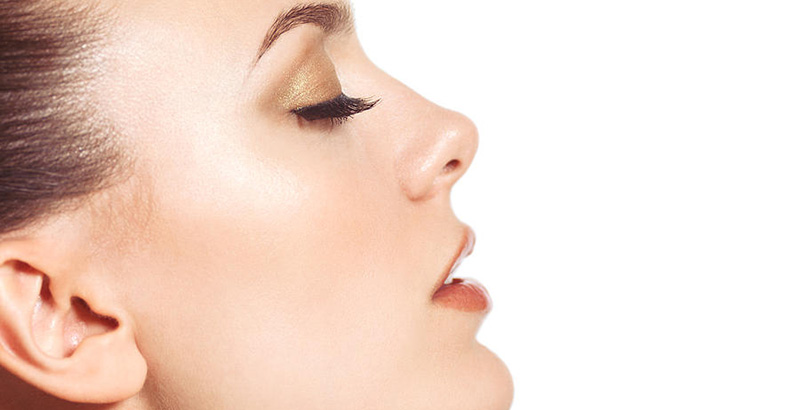Contents;
What Is An Ultrasonic Rhinoplasty?

An ultrasonic rhinoplasty is a surgical procedure that utilizes ultrasonic energy to reshape the nose. Rhinoplasty, also known as a nose job, is a common cosmetic surgery performed to enhance the appearance of the nose or improve its functionality. Traditional rhinoplasty involves the use of surgical instruments to remove or rearrange the nasal bone and cartilage. However, ultrasonic rhinoplasty, introduced in recent years, revolutionizes the approach by implementing advanced technology.
In ultrasonic rhinoplasty, a specially designed ultrasonic device is used to precisely sculpt the nasal structures. This device emits ultrasonic waves that are converted into mechanical energy, allowing surgeons to make delicate and controlled incisions. By using ultrasonic vibrations rather than manual force, the surgeon can achieve greater precision and accuracy in reshaping the nose, resulting in a more refined and natural-looking outcome.
The use of ultrasonic technology in rhinoplasty offers several advantages over traditional methods. Firstly, it allows for a more tailored and precise approach, enabling surgeons to address specific nasal concerns with greater finesse. The controlled nature of ultrasonic energy reduces the risk of damage to surrounding tissues, minimizing postoperative swelling, bruising, and discomfort. Furthermore, ultrasonic rhinoplasty enables surgeons to achieve excellent symmetry and balance, producing more predictable and consistent results.
- Enhanced precision: Ultrasonic rhinoplasty allows for precise sculpting of the nasal structures, resulting in better outcomes.
- Less tissue trauma: The controlled and gentle nature of ultrasonic energy minimizes tissue damage, reducing postoperative swelling and bruising.
- Improved symmetry: The use of ultrasonic technology enhances the surgeon’s ability to achieve balanced and symmetrical results.
| Traditional Rhinoplasty | Ultrasonic Rhinoplasty |
|---|---|
| Uses manual instruments for bone and cartilage modification. | Utilizes ultrasonic energy for precise sculpting. |
| Limited level of precision and control. | Offers greater precision and control over nasal reshaping. |
| Higher risk of tissue trauma and postoperative discomfort. | Minimizes tissue trauma and improves patient comfort during the recovery process. |
| Less predictable outcomes due to manual force used. | Provides more predictable and consistent results. |
In summary, ultrasonic rhinoplasty is an advanced surgical technique that utilizes ultrasonic energy to reshape the nose with greater precision and control. With its numerous advantages, including enhanced precision, reduced tissue trauma, and improved symmetry, ultrasonic rhinoplasty offers a promising solution for individuals seeking a more refined and natural-looking nasal appearance. If you are considering rhinoplasty, consulting with a qualified and experienced plastic surgeon can help determine whether ultrasonic rhinoplasty is the right choice for you.
How Does Ultrasonic Rhinoplasty Work?

During an ultrasonic rhinoplasty procedure, the surgeon uses a special instrument called an ultrasonic handpiece. This handpiece emits ultrasonic vibrations that are specifically targeted at the nasal bone and cartilage. The ultrasonic energy softens and breaks down these tissues, making it easier for the surgeon to reshape and sculpt the nose.
By using ultrasonic energy, the surgeon can achieve more precise contouring and avoid unnecessary trauma to the surrounding tissues. The ultrasonic handpiece allows for controlled and delicate sculpting, which results in smoother and more natural-looking outcomes. Additionally, this technique reduces the risk of complications such as bleeding and bruising.
Benefits Of Ultrasonic Rhinoplasty

This advanced technique offers several benefits compared to traditional rhinoplasty procedures.
One of the main benefits of ultrasonic rhinoplasty is that it allows for enhanced precision and control during the reshaping process. The ultrasonic waves are able to selectively target specific areas of the nose, enabling the surgeon to precisely sculpt the nasal structure with minimal disruption to the surrounding tissues. This results in a more refined and natural-looking outcome, as well as reduced risk of complications such as visible scarring or nasal asymmetry.
Another advantage of ultrasonic rhinoplasty is that it typically leads to less bruising, swelling, and post-operative discomfort compared to traditional rhinoplasty techniques. The ultrasonic waves used in this procedure cause less trauma to the tissues, resulting in faster healing and a shorter recovery period. Patients undergoing ultrasonic rhinoplasty often experience less pain and swelling after surgery, allowing them to resume their normal activities sooner.
- Ultrasonic rhinoplasty is also known to provide better preservation of nasal structures. The precision of the ultrasonic waves allows for targeted removal of excess bone or cartilage while preserving healthy tissue. This not only contributes to more predictable and aesthetically pleasing results but also helps maintain the structural integrity and function of the nose.
- Additionally, ultrasonic rhinoplasty can often be performed with smaller incisions compared to traditional rhinoplasty techniques. The use of ultrasonic instruments allows for more precise maneuvering and contouring, reducing the need for larger incisions. This can result in less visible scarring and a more discreet surgery.
In conclusion, ultrasonic rhinoplasty offers several benefits over traditional rhinoplasty techniques. The use of ultrasonic waves allows for enhanced precision and control during the reshaping process, leading to more natural-looking results. It also results in less bruising, swelling, and post-operative discomfort, as well as better preservation of nasal structures. Furthermore, this technique often requires smaller incisions, minimizing the visibility of scarring. If you are considering rhinoplasty, consulting with a qualified and experienced plastic surgeon can help determine if ultrasonic rhinoplasty is the right choice for you.
Is Ultrasonic Rhinoplasty Right For You?

One of the key benefits of ultrasonic rhinoplasty is its ability to provide greater precision and control during the procedure. The ultrasonic device, equipped with a small vibrating tip, can selectively remove excess bone and cartilage while preserving the surrounding tissues. This allows for more accurate reshaping of the nose and reduces the risk of damage to delicate structures.
Another advantage of ultrasonic rhinoplasty is a shorter recovery period compared to traditional rhinoplasty. Since the procedure is less traumatic to the tissues, patients may experience less bruising, swelling, and discomfort post-surgery. The use of ultrasonic technology also minimizes the risk of internal scarring, leading to a faster healing process.
The Procedure: Ultrasonic Rhinoplasty Step-By-Step

The first step in an ultrasonic rhinoplasty is a thorough consultation with a qualified plastic surgeon. During this consultation, the surgeon will evaluate your nose and discuss your goals and expectations for the procedure. They will also explain the entire process and answer any questions or concerns you may have.
Once you have decided to proceed with an ultrasonic rhinoplasty, the next step is the actual surgery. The procedure is usually performed under general anesthesia, ensuring that you are asleep and comfortable throughout the surgery. The surgeon will make small incisions inside the nostrils, allowing them access to the underlying bone and cartilage.
Using an ultrasonic device, the surgeon will then carefully sculpt and reshape the nasal bones and cartilage. The ultrasonic waves precisely break down the targeted areas while leaving the surrounding tissues intact. This level of precision allows the surgeon to achieve more predictable and accurate results, ensuring that the changes made to the nose are harmonious with the rest of the facial features.
After the desired reshaping is complete, the surgeon will close the incisions with dissolvable sutures. They may also place a splint or cast on the outside of the nose to provide support and protect the newly shaped structures during the initial healing phase. The entire ultrasonic rhinoplasty procedure typically takes around 1-3 hours, depending on the complexity of the case.
Overall, ultrasonic rhinoplasty offers numerous benefits to patients seeking nose surgery. The use of ultrasonic energy allows for greater precision and control, resulting in more natural-looking results. The procedure also tends to cause less bruising and swelling compared to traditional rhinoplasty techniques. Additionally, the recovery process is generally smoother and faster, with most patients returning to their normal activities within a couple of weeks.
If you are considering an ultrasonic rhinoplasty, it is important to consult with a skilled and experienced plastic surgeon. They will be able to assess your suitability for the procedure, discuss any potential risks or complications, and guide you through the step-by-step process to help you achieve the desired results for your nose.
Ultrasonic Rhinoplasty Recovery Process

After undergoing an ultrasonic rhinoplasty procedure, it is important to understand the recovery process to ensure a smooth and successful outcome. Like any surgical procedure, ultrasonic rhinoplasty requires a certain amount of time for healing and getting back to normal activities. Here is a step-by-step guide to the recovery process:
1. Immediate Post-Operative Period: Right after the surgery, patients are taken to a recovery room where they are monitored closely. The nose is typically packed with sterile bandages to control bleeding, and a splint may be placed externally to support the newly shaped nose. Patients may experience swelling, bruising, and minor discomfort during this period.
2. First Week of Recovery: During the first week, it is important to rest and take care of your nose. It is recommended to keep your head elevated when sleeping to reduce swelling. It is common to experience nasal congestion and a stuffy feeling during this time. Pain medication prescribed by your surgeon can help manage any discomfort.
3. Swelling and Bruising: Swelling and bruising are normal after an ultrasonic rhinoplasty procedure. Swelling is likely to reach its peak within the first 48 hours, and it gradually subsides over the following weeks. Bruising around the eyes may also occur but typically resolves within 1-2 weeks. Applying cold compresses can help reduce swelling and alleviate discomfort.
Potential Risks And Complications Of Ultrasonic Rhinoplasty

One of the primary risks of ultrasonic rhinoplasty is the possibility of excessive removal of nasal tissue. The ultrasonic technology used in this procedure can be very efficient in removing bone and cartilage, but there is a small risk of overcorrection or removing too much tissue. This can lead to an unnatural or disproportionate appearance of the nose.
In some cases, patients may experience prolonged swelling and bruising after ultrasonic rhinoplasty. While swelling is normal during the recovery process, excessive and prolonged swelling can indicate an underlying issue. It is important to follow post-operative instructions provided by the surgeon to minimize the risk of complications.
- Another potential risk of ultrasonic rhinoplasty is infection. Like any surgical procedure, there is a risk of infection at the incision sites. To reduce this risk, antibiotics are often prescribed before and after the surgery. If any signs of infection, such as increased pain, redness, or discharge, occur, it is crucial to seek immediate medical attention.
- Additionally, there is a small risk of nasal obstruction following ultrasonic rhinoplasty. This can occur if the surgeon does not adequately address issues such as a deviated septum or nasal valve collapse during the procedure. Nasal obstruction can affect breathing and may require additional corrective surgeries.
- In rare cases, patients may experience sensory changes or numbness in the nose and surrounding areas after undergoing ultrasonic rhinoplasty. While this is typically temporary, it can be concerning for some individuals. It is essential to discuss potential sensory changes with the surgeon before the procedure.
Furthermore, like any surgical procedure, there are general risks associated with anesthesia, such as allergic reactions or adverse effects. Patients undergoing ultrasonic rhinoplasty should be evaluated for any pre-existing medical conditions or allergies that could increase these risks. It is imperative to disclose your complete medical history to your surgeon to ensure your safety during the procedure.
| Potential Risks and Complications: |
|---|
| Excessive removal of nasal tissue |
| Prolonged swelling and bruising |
| Infection |
| Nasal obstruction |
| Sensory changes or numbness |
| Anesthesia-related risks |
In conclusion, while ultrasonic rhinoplasty offers many advantages, it is crucial to have a comprehensive understanding of the potential risks and complications associated with the procedure. Consulting with a qualified and experienced surgeon is essential to assess your suitability for ultrasonic rhinoplasty and to minimize the risks involved. Open communication with your surgeon will ensure informed decision-making and optimal results.
Rhinoplasty Surgery About
What Are the Risks of Rhinoplasty?
Rhinoplasty Surgery Recovery Timeline
